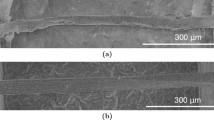Abstract
A spacing and geometric efficiency concept is developed that deviates from the available formulae by its foundation on geometric probability theory. The solutions can easily be extended to cover non-random structures as well.
Two-dimensional structural information is presented by means of sections and projections (X-ray radiography). Counting of features or intersections with a superimposed test-line system can in both cases provide the necessary information for the determination of the fibre spacing. The spacing formulae are also transformed for design purposes, in which case they contain only geometric parameters and the volume fraction.
The spacing concept comprises formulae for the mean free spacing and the average nearest neighbour distance in two- and three-dimensions. As such they can be applied to structure-insensitive and structure-sensitive properties (cracking), respectively, of fibre reinforced cementitious materials.
A brief survey of experimental results is presented.
Résumé
On développe une conception de l'espacement et de l'efficacité géométrique qui diffère des formules eiistantes étant donné qu'elle repose sur une théorie géométrique et probabiliste. Les solutions peuvent être facilement étendues aux structures non aléatoires.
Les résultats pour des structures à deux dimensions sont traduits par des sections et projections (obtenues par radiographie X). En comptant les sections des fibres ou les intersections avec un réseau de lignes superposées, on peut obtenir dans les deux cas l'information nécessaire pour la détermination de l'espacement des fibres.
Les formules d'espacement sont aussi transformées pour les applications au calcul. Elles ne comprennent alors que des paramètres géométriques et la fraction volumétrique. Par le concept d'espacement on introduit des formules pour déterminer la distance libre moyenne et la distance à la fibre la plus proche dans des structures à deux et à trois dimensions. Telles quelles elles peuvent être appliquées à l'étude de propriétés aussi bien sensibles qu'insensibles au changement d'orientation des fibres des matériaux renforcés.
On présente un bref aperçu des résultats expérimentaux.
Similar content being viewed by others
References
Sroeven P.—Morphometry of fibre reinforced concrete, Part II. Inhomogeneity, anisometry, spacing and efficiency in partially oriented structures. Mat. Struct. (to be published).
Edgington J., Hannant D. J.—Steel fibre reinforced concrete. The effect on fibre orientation of compaction by vibration. Mat. Struct., Vol. 5, No. 25, 1972, p. 41.
Stroeven P.—The analysis of fibre distributions in fibre reinforced cementitous materials. Presented at Micro 76, London, September 1976, also to be published in J. Microsc.
Stroeven P.—Application of various stereological methods to the study of the grain and the crack structure of concrete. Proc. Fourth Int. Congr. Stereol., Gaithersburg. 1975, NBS Spec. publ., 431, 1976, also been published in J. Microsc., Vol. 107, No. 3, 1976, p. 313.
Stroeven P.—Stereometric analysis of structural inhomogeneity and anisotropy of concrete. In Proc. Symp. Quant. Anal. Microstructures, Pract. Metallography. Spec. Issue 5, Dr. Riederer Verlag, Stuttgart, 1975, p. 291.
Stroeven P.—Methods for the evaluation of topological characteristics of the pore structure: application to crack porosity. Proc. RILEM/IUPAC Symp. Pore Structure and Properties of Materials, Academia, Prague, 1973/1974, p. C529.
Stroeven P.—Morphometry of plain and fibre reinforced concrete by means of image analysis techniques. Short version in Proc. Second Int. Conf. Mechanical Behaviour of Materials, Boston, 1976.
Aveston J., Kelly A.—Theory of multiple fracture of fibrous composites. J. Mat. Sc., Vol. 8, 1973, p. 352.
Fullman R. L.—Measurement of particle sizes in opaque bodies. Trans. AIME, Vol. 197 March, 1953.
Vouk V.—Projected area of convex bodies. Nature, Vol. 162, August, 28, 1948, p. 330.
Stroeven P.—Some aspects of the micromechanics of concrete. Ph. D. Thesis. Delft. 1973.
Delesse M.—Procédé mécanique pour déterminer la composition des roches. Ann. Mines, Vol. 13, 1848, p. 379.
Chayes F.—Petrographic modal analysis, Wiley, New York, 1956.
Rosiwal A.—Über geometrische Gesteinsanalysen. Bull. Geol. Soc. Am., Vol. 14, 1903, p. 466.
Underwood E. E.—Quantitative evaluation of sectioned materials. In Stereology, Proc. Second Int. Congr. Stereol., Chicago, Springer Verlag, 1967.
Gurland J.—Spatial distribution of discrete particles. In Quantitative Microscopy,Rhines F.N., de Hoff R. T., ed., McGraw-Hill, 1968.
Hertz P.—Über die gegenseitigen durchschnittlichen Abstand von Punkten, die mit Bekannter mittlerer Dichte im Raum angeordnet sind. Math. Ann., Vol. 67, 1909, p. 387.
Kendall M. G., Moran P. A. P.—Geometrical probability. C. Griffin Co., London, 1963.
Saltikov S. A.—Stereometrische Metallographie. VEB Deutschen Verlag für Grundstoffindustrie, Leipzig, 1976 (translated from Russian).
Underwood E. E.—Surface area and length in volume. In Quantitative Microscopy, McGraw-Hill Book Co., 1968, p. 77.
Underwood E. E.—Projected Images. In Quantitative Stereology, Addison-Wesley Publ. Co., 1970, p. 148.
Chan H. C., Patterson W. A.—The theoretical prediction of the cracking stress of glass fibre reinforced inogranic cement. J. Mat. Sc., Vol. 7, 1972, p. 856.
Kasperkiewicz J.—Fibre spacing in steel fibre reinforced concrete composites. Proc. Twelfths Polish Solid Mech. Conf., Szczyrk, 1975.
Madjumdar A. J.—Recent developments in the theory of reinforced cement and concrete. In Wlasnòsci Mechaniczne i struktura Kompozytów Betonowych. Ossolineum. 1974, p. 441.
Parimi S. R., Shridhar Rao J. K.—Effectiveness of random fibres in fibre reinforced concrete. Proc. Int. Conf. Mechanical Behaviour of Materials, Kyoto, 1971, p. 813.
Kasperkiewicz J.—Fibre spacing in steel fibre reinforced composities. Mat. & Struct., January February, No. 55, 1977, p. 25.
Hilliard J. E.—Optimun procedures for determining spatial parameters related to mechanical properties. In Quant. Relation between Properties and Microstructures, Proc. Int. Conf. Haifa, 1969, Israel Univ. Press. 1969.
Boer L. J. Den.—Fibre reinforced concrete. Student Report Stevin Laboratory, 1972 (in Dutch).
Author information
Authors and Affiliations
Rights and permissions
About this article
Cite this article
Stroeven, P. Morphometry of fibre reinforced cementitious materials. Mat. Constr. 11, 31–38 (1978). https://doi.org/10.1007/BF02478701
Issue Date:
DOI: https://doi.org/10.1007/BF02478701




